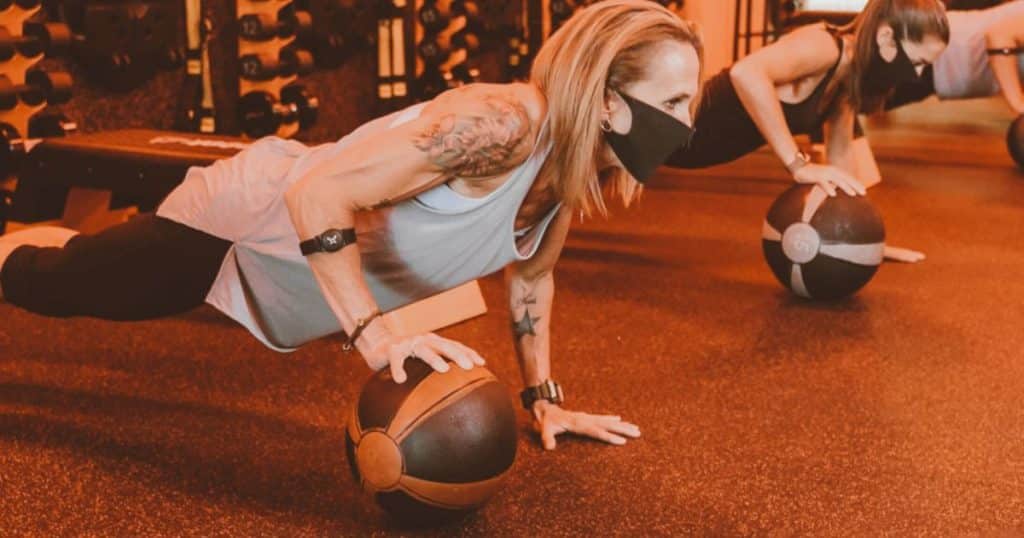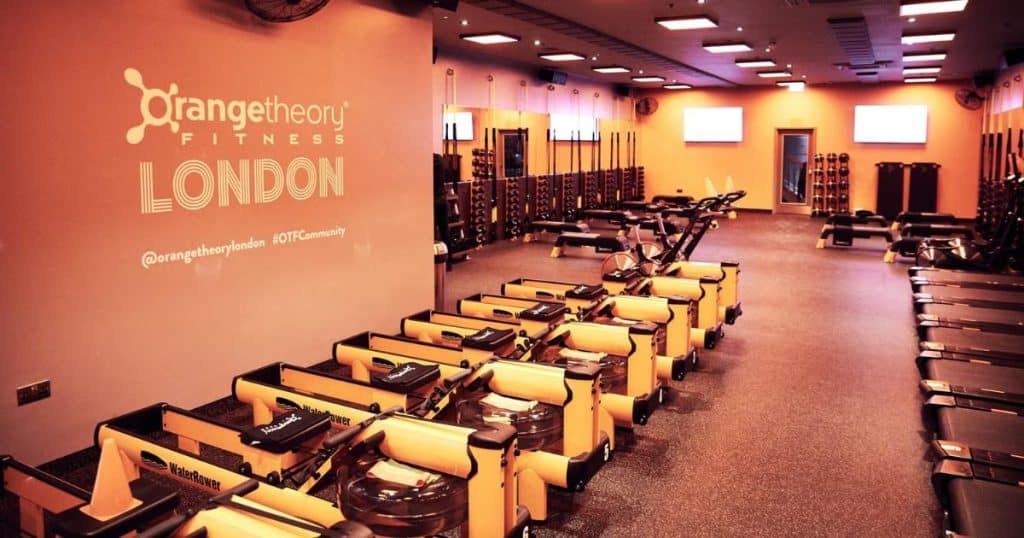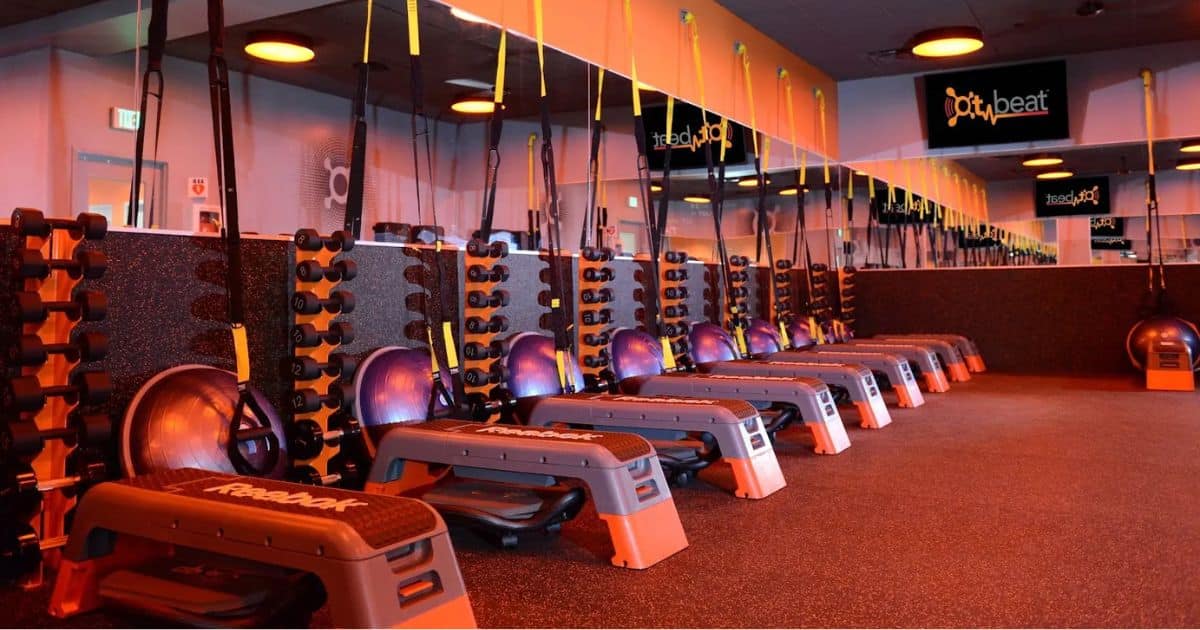So, you’ve decided to join the Orangetheory Fitness craze and get sweating with their heart-rate-based HIIT workouts. Awesome choice! But now you’re wondering about the whole “2G vs 3G” thing—what’s the difference, and which one should you choose?
Don’t worry, this guide has you covered. By the end, you’ll know exactly which format is the best starting point for smashing your fitness goals.
What is Orangetheory Fitness?

Before we dive into the 2G and 3G specifics, let’s quickly cover what Orangetheory Fitness is all about. At its core, it’s a science-backed approach to high-intensity interval training (HIIT) that combines cardiovascular and strength training in the same session.
The workouts are guided by heart rate monitoring—during class, you’ll wear a tracker that specifies your effort in five color-coded zones from gray (easy) all the way up to red (maximum effort). Orangetheory’s goal is to push you into the orange and red “anaerobic” zones to maximize calorie burn and metabolic boost.
By integrating running, rowing, and floor exercises, Orangetheory provides a full-body HIIT challenge. And speaking of those floor exercises…
More Post:
How Long Does It Take To Walk 5 km? Fast-Track Your 5km Walk
The Basics of Orangetheory’s 2G Classes

In Orangetheory’s 2G format, the class is divided into two groups that rotate between different stations—typically treadmills for running/walking intervals, rowers for cardio rowing bursts, and the weight room floor for strength exercises.
A standard 2G class lasts around 60 minutes with the time split evenly between the two groups. So if you start on the treadmill, you might do a 30-minute block of tread intervals before switching to the rower and floor exercises for the remaining half.
The 2G pacing is fairly structured, with coaches providing guidance on speed, incline, and weight selections appropriate for different fitness levels. This format is perfect for Orangetheory first-timers or those still building up their endurance base.
For example, your treadmill block might look like this:
- 1 min push pace
- 1 min base pace
- 1 min push pace
- 1 min base pace at 2% incline
- 1 min push pace
- 1 min base pace at 3% incline
- 30 sec all-out effort sprint
With the coach’s cues, you can adjust your speeds to find the right level of challenge as a beginner.
The same idea applies to the rower intervals and floor exercises, making 2G an approachable way to learn proper form.
Taking It Up a Notch: The Intensity of 3G Classes
While 2G offers a solid workout, Orangetheory’s 3G format really turns up the burn for an added endurance challenge. Instead of two groups, the class is divided into three teams that rotate through the treadmills, rowers, and floor exercises in timed intervals.
Let me paint the 3G picture for you: You start on the treadmill, pushing hard for a 3-minute run. Before you can catch your breath, the coach calls “time!” and you quickly transition to the rowers. After another scorching few minutes, it’s off to the weight floor before circling back to that treadmill.
It’s basically HIIT on athletic steroids with little rest between blocks as you cycle through complementing cardio and strength segments. The transitions are fast-paced, the intervals are condensed, and you can realistically expect to be drenched in a motivating puddle of your own sweat by the time you’re done.
“The 3G class is designed to be a bit more intense and have more variety due to the quicker transitions,” says Edwardo Garcia, an Orangetheory Fitness coach in Austin. “For our members looking for that extra challenge, 3G is the way to go.”
While not for the faint of heart, 3G’s time constraints and nonstop motion make for a uniquely demanding full-body cardio and strength workout.
Core Differences: 2G vs 3G at a Glance
To underscore the key distinctions, here’s a quick reference for how 2G and 3G formats compare:
| Factor | 2G Format | 3G Format |
| Class Size | Smaller groups | Larger groups (more people cycling through stations) |
| Coach Attention | More personalized guidance | Less 1-on-1 time, more team motivation |
| Exercise Focus | Focused blocks (e.g. straight 30 mins on tread) | Varied, fast-switching between stations |
| Transitions | Slower paced rotations | Rapid transitions every few minutes |
| Best For | Beginners, building endurance base | Experienced members, added endurance challenge |
As you can see, the 2G and 3G progressions create quite different workout experiences and intensity levels. But which one is superior? That really depends on your unique fitness goals and current abilities.
How to Choose the Right Orangetheory Format
The million-dollar question: Should you start with 2G classes to build a solid foundation or just throw yourself into the intense 3G deep end? Here are some key factors to consider:
Current Fitness Level Be honest about where your endurance and strength stand right now. If you’re relatively new to HIIT training, the 2G format allows you to focus on form while building up your cardiovascular base. You’ll still get an awesome calorie-torching workout without being overwhelmed by the fast transitions of 3G.
Scheduling Flexibility While most Orangetheory studios offer both 2G and 3G options, class times can vary. If you have a limited window to workout, you may need to just take whatever format is available. But no worries, you’ll still get sweaty!
Specific Goals Are you training for a competition or just want an efficient full-body burn? If your main objective is muscle building or endurance focused (like prepping for a race), one format may better align with those needs over the other.
Personality Type Be honest—are you the type who prefers structured guidance and focused repetition? Or do you crave more variety and conditioning challenges? Let your inner psychology determine if 2G’s blocks or 3G’s intervals are more motivating.
Ideally, you’ll want to sample both formats and see what intensity level allows you to work at your maximum sustainable effort. Don’t be afraid to start with 2G and work your way up to more 3G classes as your endurance improves.
As Eduardo advised, “The coaches can always provide modification options to scale things up or down, so members should focus on giving their all during that hour rather than getting too hung up on the format.”
Tips for Getting the Most from Your Orangetheory Experience
Whichever format you choose, there are some universal tips for maximizing your Orangetheory Fitness results:
Listen to Your Coaches The coaches are trained professionals who can guide you on proper form, pacing, and how to safely challenge yourself. They know how to read your performance metrics, so trust their encouragement when they suggest nudging you into a higher gear.
Lean on Heart Rate Data
Orangetheory provides monitors that precisely track your heart rate zones. Pay attention to those colored dynamics and aim to get at least 12 minutes of “splat points” in the orange and red zones.
Set Incremental Goals Maybe your initial goal is just making it through a full class without feeling like death. That’s great! From there, focus on progressive targets like increasing your push speeds, rowing distances, or weight amounts used. Consistency is key.
Recover Properly HIIT workouts are extremely demanding. Be sure you’re replenishing with appropriate nutrition and getting enough sleep/rest days between sessions. Proper recovery allows your body to rebuild stronger than before.
Find Your Tribe Group energy is a huge motivational factor. Try different coaches and class times to find an Orangetheory tribe with attitudes and personalities that inspire you to keep coming back.
With commitment and the right mindset, Orangetheory’s heart rate-guided HIIT training can help get you firmer, stronger, and more energized than ever before—no matter if you start with 2G or transition to the intense 3G challenge!
Frequently Asked Questions
Is 2G or 3G Orangetheory Better?
This is a common question, but the reality is that neither 2G nor 3G is definitively “better”—it simply depends on your individual fitness level and goals. They are designed for different purposes and intensities.
2G Classes Are Ideal For:
- Beginners who are new to Orangetheory’s HIIT style
- Those looking to build up a solid endurance foundation
- Focusing on proper form and technique with more structured coaching
- Getting an effective calorie-burning workout without being overwhelmed
3G Classes Are Ideal For:
- Experienced members ready for an added endurance challenge
- Introducing more variety and intensity through faster transitions
- Increasing overall conditioning and athletic performance
- Taking your training to the next level after establishing a base
Neither format is inherently superior. The 2G blocks allow you to hone in on specific training zones like running endurance. Conversely, the 3G intensity builds impressive full-body stamina.
The best approach is to start with 2G and use it as a steppingstone before progressing to more frequent 3G classes as you improve your cardiovascular health and overall fitness abilities.
“There’s no such thing as one being better than the other—it’s about finding the right personal challenge,” says Orangetheory coach Lia Metcalfe. “We encourage members to try both and be open to evolving between them.”
How Do I Get the Best Out of Orangetheory?
To maximize your Orangetheory experience and see optimal results, the key factors are:
Effort & Consistency Simply showing up doesn’t cut it—you need to push yourself to those challenging “orange” and “red” heart rate zones for a set period each class. The more diligent effort you give, the better results you’ll see.
Consistency is also vital. Shooting for at least 3-4 Orangetheory sessions per week, combined with balanced nutrition, allows your body to make rigorous cardiovascular and strength progress over time.
Leverage the Coaching One of Orangetheory’s core benefits is the excellent coaching team. The coaches are trained to provide individualized guidance on heart rate targets, recommended weights/resistance, form corrections, and techniques for safely increasing your intensity.
Develop a rapport with your coaches, be receptive to their advice, and allow them to tailor your experience. They are masters of motivating and progressing you.
Wear Your Heart Rate Monitor Orangetheory’s whole methodology revolves around your real-time heart rate dynamics. Always wear your monitor and aim to accumulate those “splat points” by pushing yourself into the anaerobic zones.
Being able to visualize and track your effort data helps ensure you’re are staying in the challenging, but sustainable sweet spot.
Cross-Train for Balance While Orangetheory provides an awesome HIIT regime on its own, cross-training with some lower intensity exercises like yoga can promote recovery, mobility, and balance out the high-impact work.
Find Your Vibe Part of sustaining your momentum is enjoying the experience. Take classes at different times and with various coaches until you find that magic combo of energy, music playlists, and group camaraderie that keeps you looking forward to showing up.
What is the Difference Between 2G and 3G?
The core difference between Orangetheory’s 2G and 3G class formats comes down to:
Group Sizes
- 2G has two groups rotating between stations like treadmills and weight floors
- 3G has three groups circulating through treadmills, rowers, and weight floors
Exercise Timing
- 2G groups spend longer blocks (e.g. 30 minutes) at each station
- 3G groups rotate every few minutes in condensed intervals
Intensity Level
- 2G classes build aerobic endurance at a more moderate intensity
- 3G classes crank up the anaerobic challenge through varied, fast transitions
Fitness Levels
- 2G welcomes beginners focused on fundamentals and lower impact
- 3G is geared toward experienced members seeking added intensity
So in summary, the 2G format provides focused aerobic and strength blocks ideal for building up your base abilities. The 3G format keeps your heart rate escalated with minimal rest between diverse cardio and floor sequences.
Both are effective HIIT styles, but 3G takes the conditioning aspect to a higher level. Many members start with 2G then incorporate more 3G classes as they improve.
How Many Times Per Week for Orangetheory Results?
Consistency is crucial for achieving optimal results from Orangetheory’s HIIT programming. Most coaches and experts recommend:
For Beginners
- Start with 2-3 sessions per week to build up endurance
- Focus on lower-impact, technique-focused 2G classes initially
- Use active recovery days like walking in between
Intermediate Level
- Increase to 3-4 sessions per week, mixing in some 3G classes
- Example schedule: 2 days 2G classes, 1-2 days 3G classes
- Incorporate recovery tactics like stretching, foam rolling, etc.
Advanced Training
- Aim for 4-6 workouts weekly as you increase cardiovascular abilities
- Majority of sessions can be high-intensity 3G classes
- Make sure to still include at least 1 full rest day per week
The key is to progressively increase frequency, intensity, and challenge level as your body adapts and conditioning improves. Don’t try to jump to an advanced 3G schedule until you’ve established an endurance base.
And of course, be sure you’re fueling properly with balanced nutrition and quality sleep/recovery. Consistency yields the most impactful Orangetheory results.
In Conclusion
When it comes to Orangetheory’s signature HIIT workouts, the 2G and 3G class formats have distinct vibes—but they are simply different waves of the same transformative system.
The 2G classes lay an aerobic foundation with focused cardio and strength blocks. They’re perfect for beginners learning proper form or those who prefer more structure and guidance.
Alternatively, the 3G classes turn up the metabolic burn by integrating faster transitions between diverse cardio and weight floor sequences. This advanced format builds incredible endurance and conditioning for seasoned members.
There’s no definitive “better” option—it depends entirely on your current fitness level, abilities, and personal training goals. The ideal approach is often to start with 2G, use it as a launchpad, then gradually incorporate more challenging 3G classes as you progress.
So don’t get paralyzed by the 2G vs 3G dilemma. Get started, trust the process, and let Orangetheory’s heart rate-guided HIIT system guide you along the path of getting stronger, fitter, and more energized than ever!

I founded the sports news website SportRevUp in 2022 to deliver breaking news and in-depth analysis on major leagues like the NFL, NBA, and MLB.
With years of experience reporting on professional sports, I created an ad-free platform for engaging coverage and discussion as editor-in-chief overseeing all content strategy.
I continues developing SportRevUp to provide sports fans the news and discussion they crave about favorite teams and athletes.
